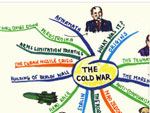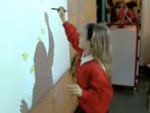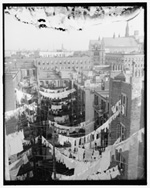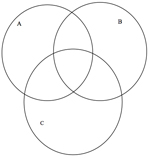Mind Mapping: Visualizing Historical Thought

Mind Mapping applications are tools that allow students to develop a physical representation, a blueprint of their thinking that goes from the concrete to the more abstract. Mind Maps provide a clear and organized visual snapshot of how the ideas and information are outlined in one’s head. This way one can see where ideas need to be further developed and how all the information is linked. This snapshot is developed and analyzed by the student. He or she identifies the logical flow of ideas connecting one to the next and building on each in a web-like form. Mind Mapping is truly a revolutionary way of thinking and learning!
As an educator I have found the electronic tool of Mind Maps to be pivotal in the success of some of my students, particularly when looking at students who are visual learners and mathematical/logical learners. I have also found that students in the special education classroom benefit from Mind Mapping. The tool allows them to demonstrate their understanding without the rigor of extensive writing. It also allows them to monitor their own understanding, and thus helps them continue to build toward metacognition . . . every educator’s dream.
Below are just a few of the many Mind Mapping sites available. I happen to be partial to Mindjet, but click on the links and check them out for yourself.
Furthermore Mind Mapping can be used in the following ways. Please note: this list details just a few ways to use this tool. There are countless ways to incorporate it into your classroom.
- Vocabulary development—detailing what the word is, what it’s not, and examples
- Outlining an essay or other form of writing
- Viewing and analyzing differing points of view of two historical figures/events in history
- Developing a timeline of a historic event
- Comparing and contrasting events and people in history or present day issues
- Identifying the main event and detailing the cause/s








